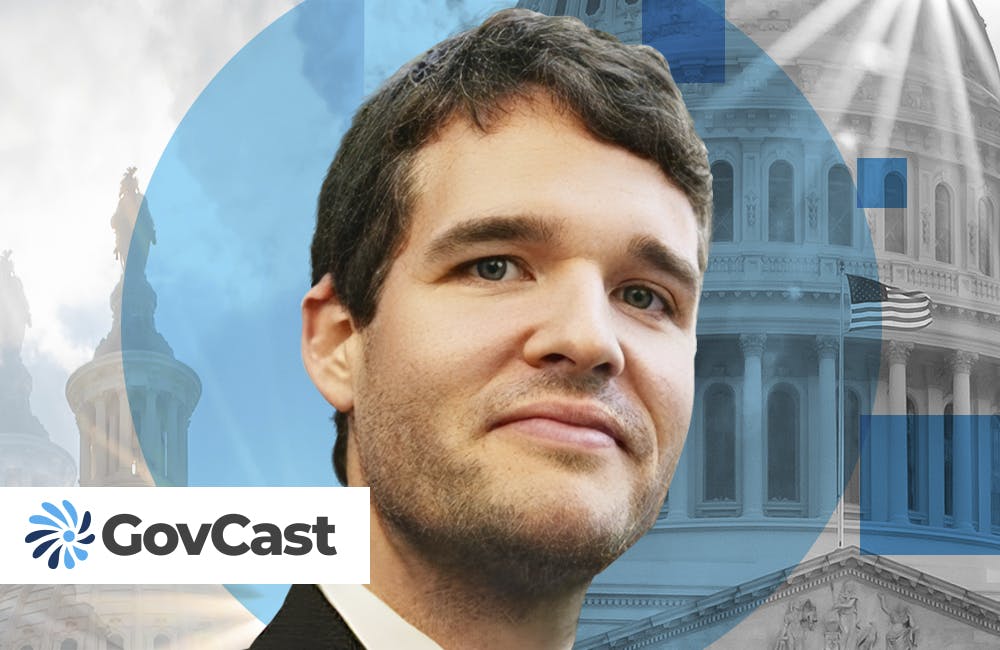VA Signals Focus on User-Centric Analytics
Combining practices from the private sector with advances in big data, the agency has begun systematically reshaping veteran care.

In a move toward overcoming challenges around providing care best tailored to veterans’ needs, the Department of Veterans Affairs is turning to big data analytics to improve the agency’s core services, top agency leaders detailed this week at the AIWorld Government conference in Washington, D.C.
The agency has made significant advances in its human-centered design policy through leveraging both veterans data and personal feedback to instate agency-wide reforms, explained conference speakers Chief of Staff Lee Becker and Director of Enterprise Measurements Anil Tilbe of the Veterans Experience Office.
This newfound approach helped inform the Journeys of Veterans map, a comprehensive outline of how veterans are introduced to and subsequently navigate the VA and its myriad services. Rather than an agency-centric perspective that views the VA as a siloed bureaucracy, the Journeys of Veterans approach considers how veterans with particular needs are guided through intake and care — evaluating the process holistically from referral to ongoing treatment. Lee Becker summarized this philosophy as “wanting to make sure we’re solving problems for the right reasons.”
Becker highlighted the need to tailor the VA’s services to best help veterans reintegrate into civilian life, particularly through providing effective post-traumatic stress disorder (PTSD) counseling and helping former servicemen avoid substance abuse and homelessness. As both speakers noted, veteran services that are difficult to access, or seem daunting to apply for, risk turning away applicants who have the strongest need for VA care.
Becker also emphasized that VA reforms are an ongoing process informed by veteran feedback and that the agency will continue evolving to best meet the needs of returning soldiers. This has involved combining big data analysis with customer experience review to appraise both the initial application process as well as veterans’ interactions with the myriad forms of VA care. The agency’s website has also undergone extensive redesign based on the evaluation of user data, with VA analysts noting which pages are most commonly sought by visitors while ensuring key services are easy to view and access.
The ultimate goal appears to center on building a dynamic optimization framework that is especially responsive to user experience. Recent innovations in VA care have been supported in part by integrating best practices from the private sector, noting how corporations renowned for their quality of customer service have shaped their business models to build and sustain positive customer relations. This has run in tandem with integrating new developments in big data processing, particularly the coalescing of separately compiled data sets.
Paradoxically, this collection and processing of big data appears to be making the VA’s care process more fundamentally human. The newly launched Veterans Signals initiative has focused on collecting and analyzing survey data from veterans who have interacted with various stages of the intake-to-care process, breaking down analysis depending on which specific benefits or treatment are being sought. Insights from this collection of user surveys are then used to make reforms throughout the agency as a whole, ensuring the concerns of veterans are being duly addressed across all VA services.
As Becker emphasized, the VA’s foundational purpose is to ensure veterans fully reintegrate into civilian life while helping them overcome war’s physical and mental scars.
This is a carousel with manually rotating slides. Use Next and Previous buttons to navigate or jump to a slide with the slide dots
-

IRS CX Efforts Come With a New Acquisition Office
The agency is using Inflation Reduction Act funds to transform the taxpayer experience through digital tools and technology.
3m read -

How Health Care Leaders Should Plan for Building Cyber Resiliency
Policy leaders recommend health care organizations implement tools like encryption and multi-factor authentication to protect their data.
4m read -

HHS Aligns AI, Tech Strategy Under its Policy Agency
ONC will have a new name and oversee more c-suites to better shape the future of health care technology policy.
3m read -

Inside VA’s Lighthouse for App Development
Andrew Fichter discusses how Lighthouse is serving veterans and why it is necessary for modernization of veterans services.
24m listen








